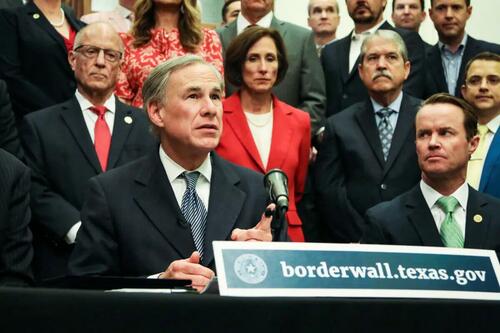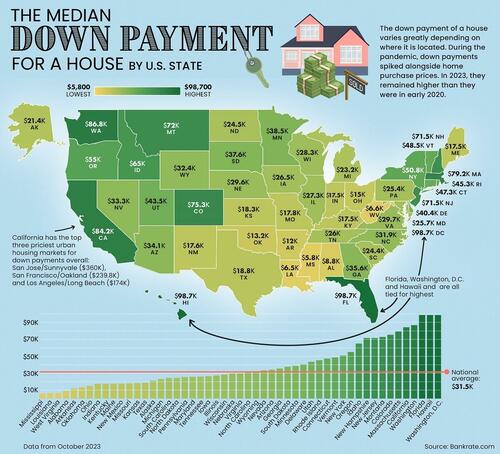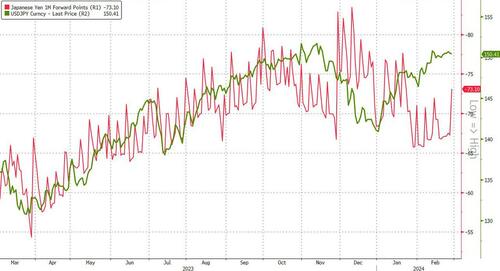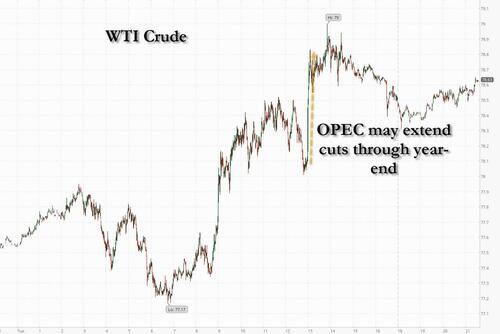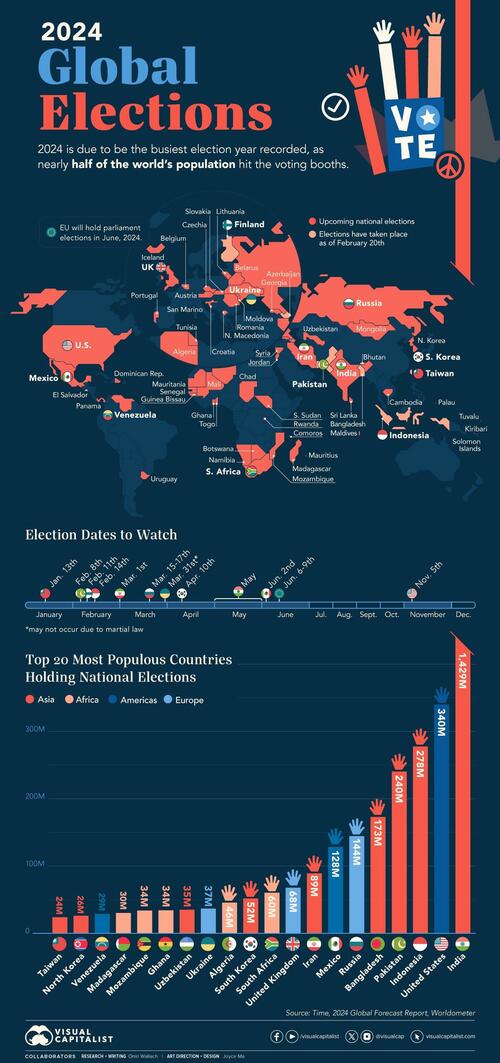Authored by Susan Crabtree viaRealClear Wire,
Conservative activists in California hope the seventh time is a charm when it comes to recalling Gavin Newsom. The governor, they say, is focused on serving as a top surrogate for President Biden and raising a national profile for his own presidential run while neglecting the state’s deep budget deficit, rising crime rate, persistent homelessness, and sky-high cost-of-living – factors driving an exodus of people and businesses to other states.

But their latest effort to oust Newsom after so many failed attempts isn’t stoking the same fears among Democrats as in the past, and even some Republicans are worried the partisan effort will blow up in their faces. It has the potential, some GOP operatives caution, to overshadow waning support for progressive policies in San Francisco and elsewhere while galvanizing Democrats and big donors behind the term-limited but politically ambitious governor.
Democrats argue that the latest recall effort is an obvious attempt to blunt presumed Newsom’s White House aspirations by showing that there’s a backlash against him resurfacing at home. But far from a big cloud hanging over his head, top California Democratic strategists are casting it as little more than an annoyance.
“I don’t think it even merits a cloud – maybe a little bit of fog or haze,” Steve Maviglio told RealClearPolitics Monday. Maviglio served as the press secretary for former California Gov. Gray Davis, a Democrat who, in 2003, became the state’s second top executive to be recalled.
Republicans are so outnumbered by Democrats in California that one of their only political weapons is a recall petition. “They can either howl at the moon, or they can file a recall petition – those are their two choices,” said Garry South, a longtime Democratic strategist who managed Davis’ successful campaigns in 1998 and 2002.
Some Republican political players across the state are also disheartened by the tired feel of the repeated long-shot effort. “I would much rather focus on the legislative and [federal and local] races where we could win, but they seem to want flashy politicking, not the hard work of retail politics,” one conservative activist told RCP.
The California Republican Party provided $125,000 for the 2021 recall effort but sidestepped questions on Monday about whether it would support it this year.
“We are eight days out from our March 5 primary and several weeks into pre-election voting,” California GOP Chairwoman Jessica Millan Patterson said in a statement. “While Gavin Newsom has been an absolute disaster for our state – from accruing a record $73 billion budget deficit to hosting the nation’s largest homeless population to flatlining the quality of our schools and allowing criminals to thrive – the CAGOP’s attention is on turning out the vote in the primary election and supporting our endorsed candidates who can fix our broken state.”
Newsom wasted no time connecting the recall to Trump, confidently predicting it would go down in flames.
“Trump Republicans are launching another wasteful recall campaign to distract us from the existential fight for democracy and reproductive freedom,” he tweeted Monday. “We will defeat them.”
Newsom triumphed over a 2021 recall that made it on the ballot and was organized by the same conservative activists. The first-term governor overwhelmingly defeated the effort to oust him after a jittery summer in which polls predicted the race as a dead heat. After Newsom was fortified by nearly $75 million in unlimited campaign donations from his committees and allies, he sailed to victory over Republican talk-radio host Larry Elder.
The deep blue state’s Democratic voters showed up for Newsom in droves, with 61.9% voting to keep Newsom and only 38.1% voting to remove him. It was essentially the same margin he won by in his first campaign for governor against businessman John Cox in 2018. After the failed recall, Newsom’s support dipped only slightly. He came back in 2022 to win a second term by 59.2% to 40.8% against state Senator Brian Dahle.
Newsom beat back the 2021 recall so strongly it only strengthened his reelection and bolstered his political ambitions, South argued. President Biden and Vice President Kamala Harris stumped with Newsom in the final days before the election. Former President Barack Obama cut a television ad, deeming the election a “matter of life and death” – the difference between “protecting kids from COVID or putting them at risk, helping Californians recover or taking them backward.”
Newsom hadn’t benefited from that level of Democratic star power since former President Bill Clinton flew in for a last-minute rally when polls showed his 2003 race for San Francisco mayor against a Green Party candidate much tighter than expected.
During his 2021 recall victory remarks, Newsom twice said he was “humbled” by the experience. But he also viewed the landslide as a validation of his strict COVID policies and efforts to lean into the country’s culture wars and hinted at his long-held White House ambitions.
“We are enjoying an overwhelming ‘no’ vote tonight here in the state of California,” Newsom told a crowd of cheering supporters gathered in Sacramento to view the recall returns. “But ‘no’ was not the only thing that was expressed tonight. I want to focus on what we said ‘yes’ to as a state. We said ‘yes’ to science, ‘yes’ to vaccines, we said ‘yes’ to ending the pandemic.”
“We said ‘yes’ to diversity, we said ‘yes’ to inclusion, we said ‘yes’ to pluralism,” he declared. “We said ‘yes’ to those things that we hold dear as Californians, and I would argue, as Americans.”
Recall organizers, led by Rescue California, acknowledge that Newsom was emboldened by beating the recall, but insist that it should have motivated him to focus his attention on fixing California’s problems instead of skewering red states and serving as a star surrogate for Biden. Half the state’s voters seem to agree.
Last fall, when Newsom was amplifying his national profile, his standing among California voters hit an all-time low, with 49% disapproving of his job as governor, a UC Berkeley Institute of Governmental Studies/Los Angeles Times poll found. His approval rating in the late October poll fell to 44%, an 11-point slide from February when 55% of voters approved his performance.
“He’s using California taxpayer money to fly around the country and the world to support a national political agenda for president when he’s not even qualified, at this point, to run the state of California as the deficit numbers approach $100 billion,” Ann Dunsmore, Rescue California’s campaign director, told RCP.
Dunsmore also points out that Newsom will have little choice but to raise taxes to reduce the deficit because the state Constitution prohibits the government from declaring bankruptcy without voter approval. Right now, Newsom is backing a proposition calling for $6 billion in new spending to curb homelessness after the state has spent more than $20 billion on the issue during his time in office while the problem grew worse.
In early January, Newsom and Democrats who run the state legislature also ushered in new health insurance payments for all illegal immigrants. Newsom this week continued taking the fight to conservative states, unveiling a six-figure ad campaign and online petition effort in several Republican-controlled states that he said are trying to ban out-of-state travel for abortions and related medications. Newsom paid for the ads with a national political action committee he launched last year with $10 million from leftover state campaign funds.
Crime and cost of living are driving more and more businesses from the state, Dunsmore said, “and now Newsom’s coming out with an abortion ad?”
“Right now, people are trying to make ends meet, and it’s getting worse, not better,” she said. “Our tax base is gone. Just how out of touch is he?”
Recall petitions can be launched easily in California, but they face formidable hurdles. This one would require signatures equal to 12% of the turnout in the last election – roughly 1.31 million verified signatures.
Dunsmore won’t say how much Rescue California, which successfully led the effort to recall Davis in 2003, plans to spend on the effort. The 2021 recall required 1.5 million signatures, which it exceeded by 126,000. It cost organizers roughly $8 million, a fraction of the $78 million Newsom amassed to fight it.
This year, however, Dunsmore says they don’t plan to use costly paid signature-gatherers posted outside shopping centers. Instead, she said her organization and its partners already have the infrastructure in place – supporters’ physical addresses and emails – from the last effort.
Garry South, however, cautions that the 2021 recall only went forward after an unprecedented four-month extension for signature-gathering. A judge appointed by GOP Gov. Arnold Schwarzenegger approved the rare extension to compensate for COVID lockdowns when signature-gathering was far more difficult.
“That’s never happened before in a recall election in California,” South said, adding that there’s “no way” recall organizers will amass the required signatures with an all-volunteer effort.
The 2003 recall effort against Gov. Gray Davis got a boost when wealthy GOP Rep. Darrell Issa poured $2 million of his own money into signature-gathering efforts because he was aiming to become governor. But Schwarzenegger, a blockbuster Hollywood actor, stepped into the race and won it, thwarting Issa’s political ambitions.
Even Davis’ low poll numbers didn’t stop him from winning election in 2002. On Election Day in 2002, South recalls that Davis’ approval rating was only 22%, and he still won with 47.4% of the vote to the GOP candidate Bill Simon’s 42.4%.
“Newsom beat the recall with nearly 62% of the vote and then was reelected to a second term with 59%,” South said. “Those are not the metrics of someone who is going to be recalled.”
Susan Crabtree is RealClearPolitics’ national political correspondent.



